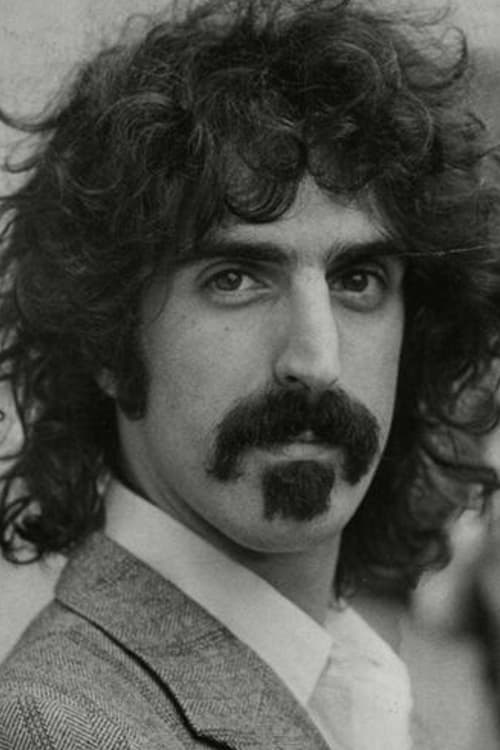Frank Zappa: We Don't Mess Around (1978)
Circus Krone 1978
ジャンル : 音楽
上映時間 : 0分
演出 : Ulrich Schramm
シノプシス
Tracklisting: 1. Pound for a Brown 2. Baby Snakes 3. Deathless Horsie 4. Dancin' Fool 5. Easy Meat 6. Honey Don't You Want A Man Like Me 7. Keep It Greasey 8. Why Does It Hurt When I Pee? 9. Sofa #2 10. Vinnie's Seal Call Fusion Music 11. Bobby Brown 12. Conehead 13. Dead Air/I'm On Duty 14. St. Alphonzo's Pancake Breakfast 15. Father Oblivion 16. Rollo 17. Bamboozled Outro
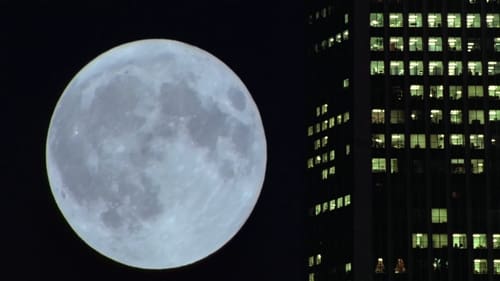
Takes us to locations all around the US and shows us the heavy toll that modern technology is having on humans and the earth. The visual tone poem contains neither dialogue nor a vocalized narration: its tone is set by the juxtaposition of images and the exceptional music by Philip Glass.

A musician tries to get by working several jobs.
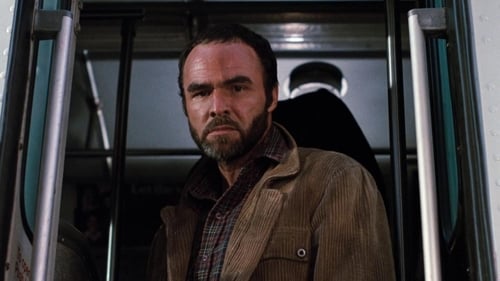
Police officer Tom Sharky gets busted back to working vice, where he happens upon a scandalous conspiracy involving a local politician. Sharky's new 'machine' gathers evidence while Sharky falls in love with a woman he has never met.
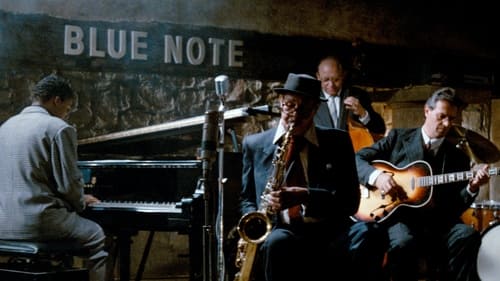
名サックス・プレイヤーの晩年を描いた感動作。デクスター・ゴードン、ハービー・ハンコックらの映画上での名セッションも刻まれたもので、ジャズ・ファンも注目の一作だ。

監獄の中、雑居房のひとつで、1人の少年が渾身の力を込め、1人の青年の首を絞めた。犯行を発見した看守たちに取り押さえられた少年は「ぼくがやりました!」と叫び続ける。この殺人事件を捜査し始める、警部(石橋蓮司)と警部補(遠藤憲一)。加害者と思われる少年は有吉淳(松田龍平)。ゲイバーで働いていた有吉は、男客から性的暴行を受けたことから逆上し殺害に及ぶ。被害者の青年は香月史郎(安藤政信)。幼い頃から様々な罪を犯し、最終的には路上で人を殴り殺した。偶然にも有吉と香月は同日に、この刑務所に投獄されている。誰にも心を開かない有吉と、気に入らないとだれかれ構わず殴り倒してゆく凶暴な香月。正反対のタイプにも関わらず、香月は有吉を守り、2人の間には濃密で暖かい空気が流れていた。そして、捜査線上に浮かび上がるもう1人の男。それはこの刑務所の新所長(石橋凌)。ぞっとするような笑みをたたえながら、恐ろしく優しい口調で話しかけるこの所長は、かつて自分の妻を香月に暴行され、結果妻は自殺するという壮絶な過去を持っていた。誰が真実を告げているのか? そして、「ぼくがやりました!」と叫び続ける有吉の真意とは……。

1930年代、ジャズ全盛期のシカゴ。ジプシージャズの天才ギタリストのエメット・レイは、崇拝するギタリストジャンゴ・ラインハルトの演奏が世界一で、自分は2番目に天才だと信じている。そんな彼は音楽に生きる反面、裏社会でも顔が通じ、娼婦の元締め、女遊び好きと自堕落な人生を送ってきた。 彼はニュージャージー州の海辺で友人ビルとの賭けに負け、仕方なくナンパした小柄で口のきけない女性ハッティと付き合うようになる。エメットの弾くギターに心惹かれたハッティは彼を愛すようになり、はじめは遊びのつもりだったエメットも辛くあたりつつも、素朴で優しい彼女に惹かれていく。 しかし、上流階級の女性ブランチに出会い惹かれた彼はハッティと別れ突然結婚するが、2人の共通点は派手好きなところ位で愛には乏しく、ブランチはいつしかジャズクラブの用心棒アルと不倫するようになっていった。

Publishing assistant Brett Eisenberg wants to be a big-time editor. However, she lacks self-confidence, a problem that isn't helped by her new, overbearing boss. Brett soon enters into a relationship with Archie, an older man who has plenty of his own issues, including alcoholism, diabetes and a difficult relationship with his daughter. Intent on helping Archie get past his problems, she turns to her dying father for advice.
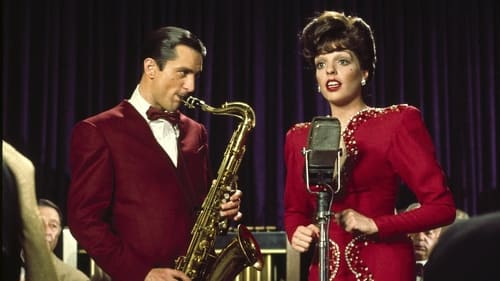
An egotistical saxophone player and a young singer meet on V-J Day and embark upon a strained and rocky romance, even as their careers begin a long uphill climb.
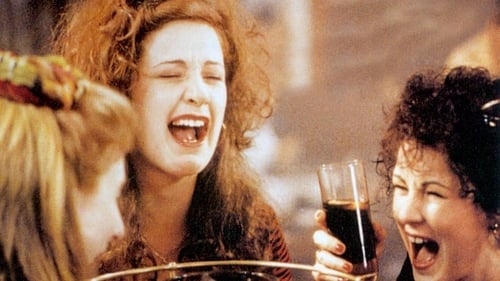
Sharon Curley is a 20-year-old living with her parents and many brothers and sisters in Dublin. When she gets pregnant and refuses to name the father, she becomes the talk of the town.

In this short film Bert Haanstra gives his vision - from the water – of a tranquil Holland. During filming he held the camera upside down and afterwards put the images ‘up right’ again in the film. By doing this, we see the ‘usual’ waterfront, but transformed by the rippling of the water. In this way Mirror of Holland became a modern looking experimental film. However this did not devalue the Dutch sentiment regarding waterfronts that are so trusted to so many.

In a surreal meeting filled with countless individuals from a variety of backgrounds, nine people recount how sex and sexuality have been used to exert control over their lives. Regardless of race, sexual orientation, nationality, social class, religion, or gender, all are equally shattered and all are equally victims. Those that recount their experiences show that the power / sex dynamic can come in many forms. Whether the power is taken away by physical or psychological means, and regardless of whether it is perpetrated by an individual, institution, or society, the results are equally devastating.

A free flow from photography to geometric abstraction hand-painted by Breer. - Harvard Film Archive

A (barely) two minute short is that it was made specially for a Paramount newsreel segment on Bute and Nemeth making films in their teensy New York apartment. Paramount apparently never got round to including the filmmakers in any newsreel, but their own film survived in the Bute-Nemeth Archive. (weirdwildrealm.com) To the rhythm of music that sounds a bit like a Busby Berkeley tune, lines and circles appear against a black background. Then triangles, in groups. Black and white squares move in tandem. Sparkling forms turn in kaleidoscopic patterns. Then cubes appear, white against the background, bouncing; a yin and yang rotate a few times before the film ends with an quick burst of scattering light.

Zdenek Pešánek created the first public kinetic sculpture, for the power station in Prague. This short experimental film focuses on a kinetic sculpture by Zdenek Pešánek. For a period of eight years it issued beams of light from the outside wall of a transformer station at Prague’s power utility before its destruction in 1939. Though genuine, these shots seem abstract to us. They are a rhythmically assembled ode to the light-creating devices and phenomena of electricity. Light arcs, coils, bulbs and various luminous elements support the alternation of positive and negative film images, creating an impressive universe of light and shade. In the 1920s, Pešánek had obtained financial support for his work with electric kinetic light art. In the 1930s, he was the first sculptor to use neon lights. He built several kinetic light pianos, and published a book titled “Kinetismus” in 1941. —http://www.centerforvisualmusic.org

Harry for the Holidays" is both a traditional and musically adventurous Christmas television special, shot in high definition and originally broadcast on NBC in 2003. The unusual yet beautiful setting is the historic interior of the Bowery Savings Building/Cipriani 42nd Street; one can see an occasional car flash by through windows behind Harry Connick Jr. and his Big Band. Connick's program includes holiday standards but his arrangements are novel, cutting against the melodiousness of the likes of "Silver Bells" or "Frosty the Snowman" with edgy strings, sizzling brass, and complex rhythms. "Santa Claus Is Coming to Town" and "The Happy Elf" swing like nobody's business, while "Silent Night" shifts from blues to ballad to gospel in a collaboration between Connick, Marc Anthony, and Kim Burrell. Whoopi Goldberg and Nathan Lane turn up for some cute sketches, and there's a bonus: Connick and Burrell doing the lovely "I Pray on Christmas," not seen in the NBC broadcast.

Harry Connick, Jr. has redefined the art of jazz piano and vocals. His repertoire ranges from stylish and witty interpretations of jazz standards to his own compositions, arranged for solo piano, jazz trio and big band. Singin' & Swingin' charts Harry's exploration of this musical style, in videos for five songs, and in three songs filmed live at London's Dominion Theatre for this home video, plus an exclusive interview.

Neil Finn brings together some of his musician friends from around the globe for an awesome series of concerts at the St. James theatre in Auckland, New Zealand. Includes performances with Johnny Marr, Eddie Vedder and Radiohead's Ed O'brien and Philip Selway. Along with kiwi artists Tim Finn and Betchadupa.
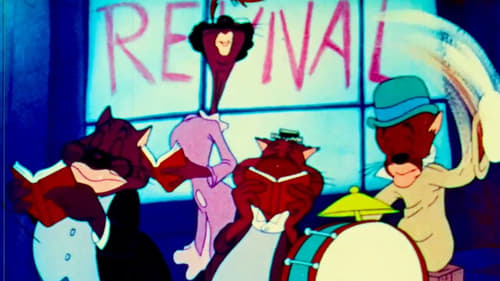
A jazz cartoon involving a "Fats Waller"-like cat who leaves the "Uncle Tomcat Mission" for the local jazz club.

"Single Frame sequences of TV or film images, with periodic distortions of the image. The images are airplanes, women men interspersed with pictures of texts like: 'silence, genius at work' and 'ich liebe dich.' The end credit is 'Television décollage, Cologne, 1963."

In 1969, the painter-sculptor Daniel Pommereulle made his third film, this one financed by Sylvina Boissonnas. Although only a short, Vite was one of the most costly of all the Zanzibar productions. It features, for instance, shots of the moon taken by a state-of-the-art telescope, the Questar, that Pommereulle first saw while visiting Marlon Brando in southern California in 1968. In Rohmer’s La Collectionneuse, Pommereulle and his friend Adrien philosophize on how best to achieve le vide (emptiness) during their summer holidays. Three years later, Pommereulle would transform the word “vide” to “vite” (quickly), signifying his profound disenchantment with the aftermath of the revolution of May ’68. —Harvard Film Archive

